This could be achieved using only matchTemplate function, but a little workaround is needed.
Lets analyse the default metrics(CV_TM_SQDIFF_NORMED). According to matchTemplate documentation
the default metrics looks like this
R(x, y) = sum (I(x+x', y+y') - T(x', y'))^2
Where I is image matrix, T is template, R is result matrix. Summation is done over template coordinates x' and y',
So, lets alter this metrics by inserting weight matrix W, which has the same dimensions as
T.
Q(x, y) = sum W(x', y')*(I(x+x', y+y') - T(x', y'))^2
In this case, by setting W(x', y') = 0 you can actually make pixel be ignored. So, how to make such metrics? With simple math:
Q(x, y) = sum W(x', y')*(I(x+x', y+y') - T(x', y'))^2
= sum W(x', y')*(I(x+x', y+y')^2 - 2*I(x+x', y+y')*T(x', y') + T(x', y')^2)
= sum {W(x', y')*I(x+x', y+y')^2} - sum{W(x', y')*2*I(x+x', y+y')*T(x', y')} + sum{W(x', y')*T(x', y')^2)}
So, we divided Q metrics into tree separate sums. And all those sums could be calculated
with matchTemplate function (using CV_TM_CCORR method). Namely
sum {W(x', y')*I(x+x', y+y')^2} = matchTemplate(I^2, W, method=2)
sum{W(x', y')*2*I(x+x', y+y')*T(x', y')} = matchTemplate(I, 2*W*T, method=2)
sum{W(x', y')*T(x', y')^2)} = matchTemplate(T^2, W, method=2) = sum(W*T^2)
The last element is a constant, so, for minimisation it does not have any effect. On the other hand, it still might me useful to see if our template have perfect match (if Q is approaching to zero). Nonetheless, for last element we actually do not need matchTemplate function, since it could be calculated directly.
The final pseudocode looks like this:
result = matchTemplate(I^2, W, method=2) - matchTemplate(I, 2*W*T, method=2) + as.scalar(sum(W*T^2))
Does it really do exactly as defined? Mathematically yes.
Practically, there is some small rounding error, because matchTemplate function
works on 32-bit floating-point, but I believe it is not a big problem.
Please note, that you can extent analysis and have weighted equivalents for any metrics offered by matchTemplate.
This actually worked for me. I am sorry I don't give actual code. I am working in R, so
I don't have the code in Python. But idea is quite straightforward.
I hope this will help.




